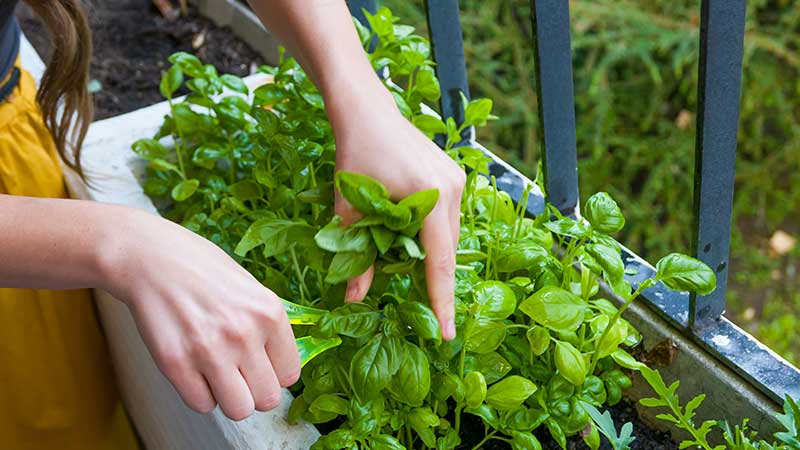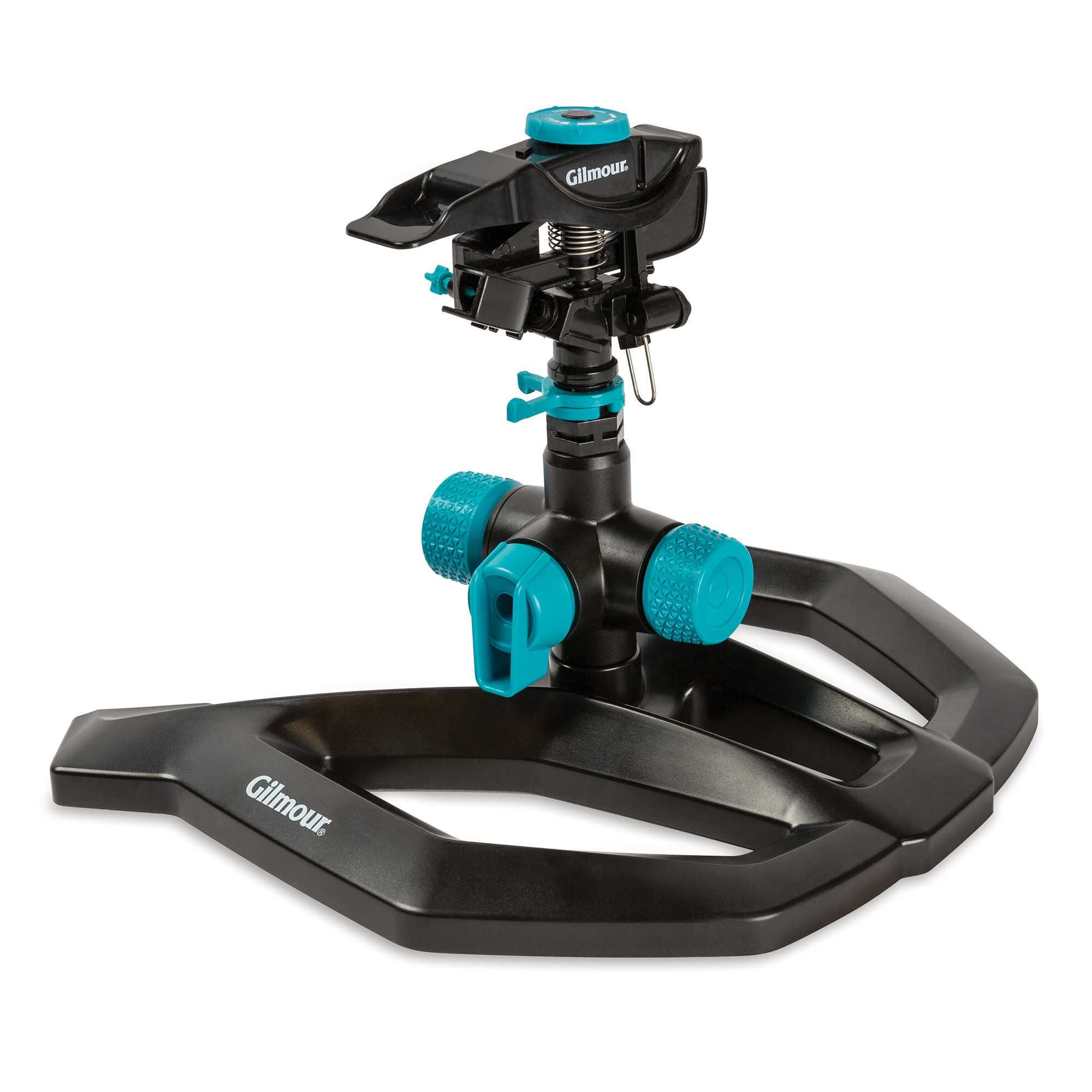How To Grow Basil In Garden
Tips & Techniques
Betterdays in Full Swing

Basil: The Ultimate Guide to Growing Fresh Basil
Gardening
Basil is a fragrant, versatile, wildly popular herb. It's a warm-weather plant that is easy to grow and delicious to eat. A nice addition to any number of culinary dishes, it is just about synonymous with summer time salads and pastas. It does well in both container and in-ground gardens. Basil smells wonderful and tastes even better.
Read on for everything you need to know about growing basil.
- What is Basil?
- Popular Types of Basil
- Planting Basil
- Harvesting Basil
- Basil Plant Care
- Common Questions About Growing Basil
What is Basil?
Despite its popularity in Italian and Mediterranean cuisine, basil is actually native to the South Pacific islands and southern Asia. It is a member of the mint family and grows as an annual. It is also quick-growing – from seed to harvest in just about 3 – 4 weeks – which makes this a rewarding herb to grow! If you haven't grown herbs before, basil is a great one to start with.
Popular Types of Basil
There are multiple varieties of basil – each with its own unique characteristic and flavor.
- Sweet Basil – Sweet basil is one of the most common varieties. Popular in salads, pastas, pestos and more, most of the basil you will find in a grocery store is sweet basil. It has a rounded leaf that is cup-shaped and medium green in color.
- Purple Basil – The gorgeous hue of purple basil is what makes it special. More of a deep burgundy than a bright purple, it is not as sweet as other varieties. It has somewhat of a clove taste to it and is great to steep in oil or vinegar. Purple basil adds a striking contrast as a garnish in prepared dishes.
- Thai Sweet Basil – Dark, smaller leaves with a hint of a licorice flavor, Thai sweet basil keeps its flavor even after cooked. It is often used in Asian dishes.
- Lemon Basil – An increasingly popular variety, lemon basil is easily found in nurseries. A wonderful addition to poultry and fish dishes, it is also nice with veggies or as a tea.
- Spicy Globe Basil – A dwarf basil variety, spicy globe basil has a peppery, strong flavor with leaves small enough to use whole. It is great for containers, as it forms a tight, small clump when growing.
- Cinnamon Basil – Fragrant and full of spice, cinnamon basil has thin, small serrated leaves and tight, contrasting dark purplish flowers. It is as pretty as it is fun to use in the kitchen. With its mild flavor, it pairs nicely in Asian meals and with fruit or grilled vegetables.

Planting Basil
Learning how to plant basil is simple as it is one of the easiest herbs to grow. Basil is not the least bit finicky, and with proper planting, care and harvesting, you can enjoy it all summer long!
- When to plant basil – The earliest time to plant basil is about 2 weeks after the last frost, once the soil is between 50° – 70° F – the warmer the better. It can also be planted during summer.
- Where to plant basil – Plant basil in a spot that gets plenty of sun. 6 – 8 hours a day is ideal.
- Growing basil from root propagation – Basil can easily be propagated simply by snipping a small section off an existing plant. Simply place the cutting, cut side down, in a clear glass of water and set it in a sunny spot. Change the water every other day, and soon there will be root growth. Once the roots are 2 inches or more, the basil is ready to be planted.
- Growing in containers – If planting basil in a container, be sure to use a very large pot. Hot summer days can dry out small pots of soil, which will hurt a growing basil plant. The smaller the pot, the more often the plant will need water.
- Soil selection – Basil loves moist, rich, well-drained soil with a pH of 6 – 7. Add a healthy amount of organic nutrients by adding compost, cottonseed meal or blood meal to the soil.
- Spacing – If planting more than one, space the basil plants about 12 – 18 inches apart to allow for growth.
- Watering – Large beds or planter boxes may only need water every 3 – 4 days or so. Extreme heat or summer rains may require you to adjust how often you are watering.
- Fertilizer – Basil should be regularly harvested, and that means you don't need to worry too much about fertilizing.
Harvesting Basil
One of the beauties of basil is there isn't a real, definitive harvest time – just pick what you need as you need it. And the best part is the more you harvest, the more a basil plant will produce. Regular harvesting will keep plants full and round. Harvest before the plant goes to seed, or "bolts." When basil goes to seed, the leaves will often have a bitter flavor.
- How to harvest basil – Once the basil plant is about 6 – 8 inches tall, begin to harvest as needed. Snip as much basil as you want, right above the point where two bigger leaves meet. Harvesting evenly around the entire plant will ensure even growth.
- How to store basil – Basil can be used right off the plant. It can also be stored for later use. Drying the leaves, freezing them or preserving them in vinegar are all options for storing basil. Flavoring oil is another wonderful use. And, of course, don't forget about making pesto! Fresh basil leaves will last a few days in water if they are stored in the refrigerator.
Basil Plant Care
Tip 1. Water consistently and regularly. Keep soil moist for optimal growth. Water early in the mornings for best results. If you are in a hotter region or having a heat wave, adding mulch around the plant can help keep moisture in.
Tip 2. Harvest often to encourage new growth.
Tip 3. If a basil plant starts to flower, the basil leaves will start losing flavor and the plant will stop growing. Removing the flowers will do the trick though, and that sweet basil flavor will return in a couple of days.
Common Questions About Growing Basil
How long does a basil plant last?
If properly cared for, basil can last for anywhere from 4 – 6 months. Typically, plants in posts will live closer to 4 months, whereas plants in the ground could live up to 6 months.
Does basil need direct sunlight?
Basil is a warm-weather plant that thrives on full sun.
Why is my basil plant drooping?
The most common cause of a drooping basil plant is not enough water. Basil loves evenly moist soil.
Are basil flowers edible?
Basil flowers are edible and have a milder flavor than the leaves. Though sometimes a bit bitter, they can be used in salads, pastas or on anything else that basil complements. Another option is to infuse oil with the flowers or make basil flower vinegar for salad dressing. Basil flowers even make a great tea.

Durable, Flexible Hoses The source of happiness, not hassles.
Our Hoses

Spray Nozzles To fit the need, and your grip.
Our Nozzles

Adjustable Sprinklers Water your lawn, not the sidewalk.
Our Sprinklers
How To Grow Basil In Garden
Source: https://gilmour.com/growing-basil
Posted by: clarkeblamot.blogspot.com

0 Response to "How To Grow Basil In Garden"
Post a Comment